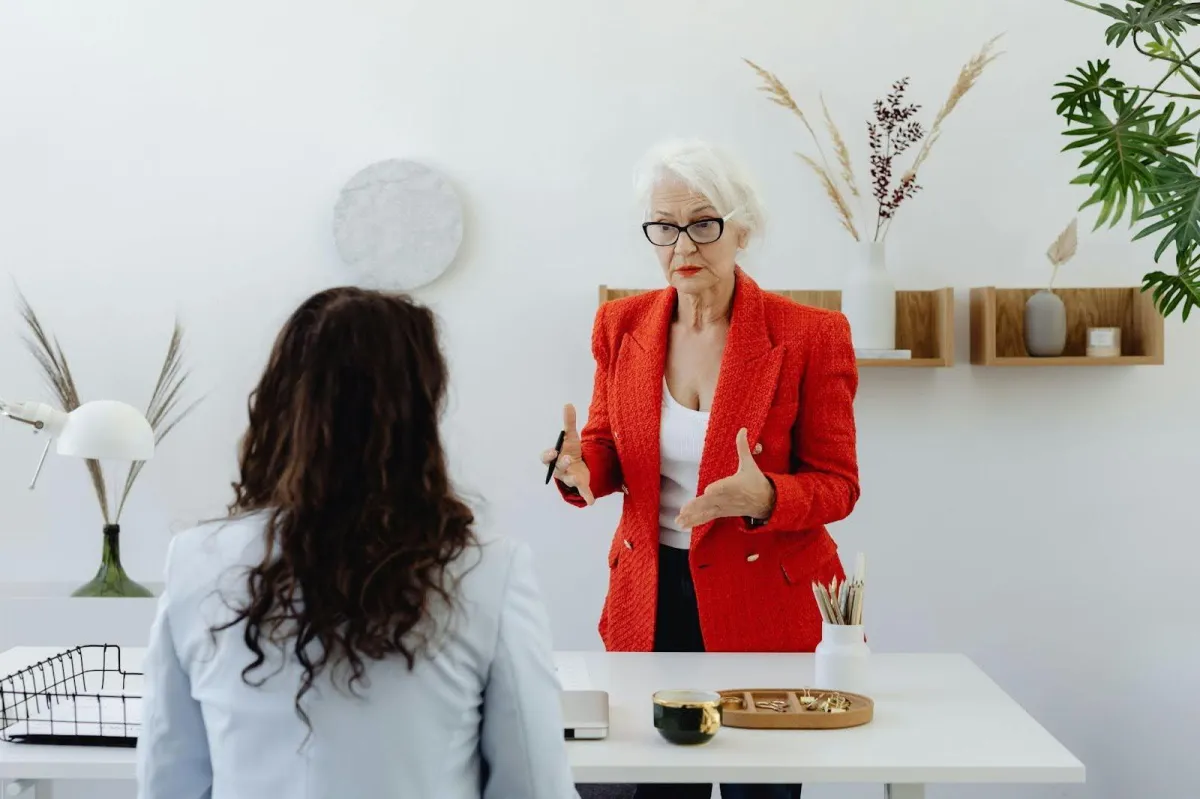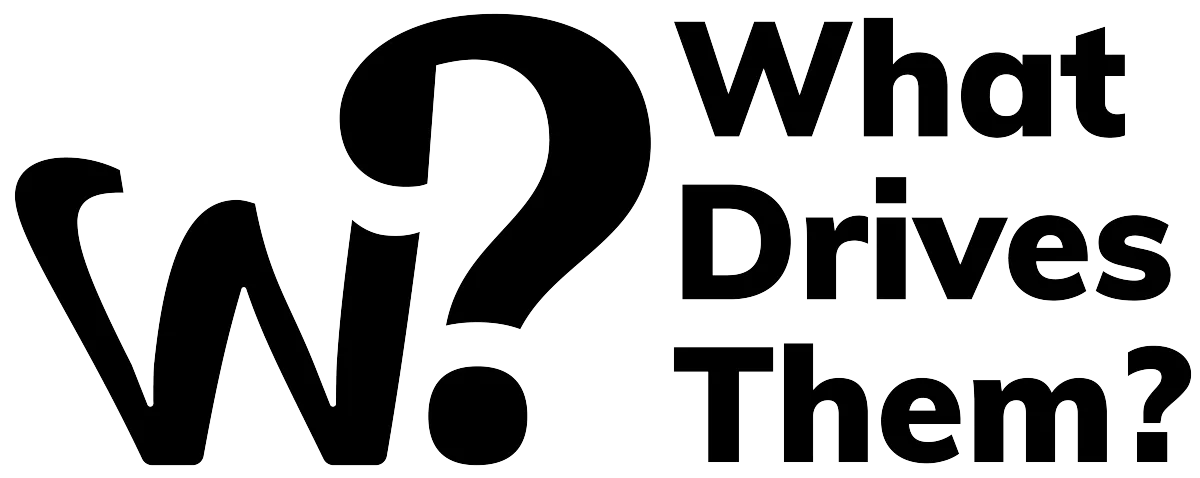
Body Language in Job Interviews: 5 Psychology-Backed Tips
Body Language in Job Interviews: 5 Psychology-Backed Tips
Why Does Your Body Language Matter More Than Your Perfect Answers? 2
What Percentage of Your Message is Actually Your Body Language? 3
What are 5 Body Language Tricks That Work in Job Interviews? 4
Your words might be perfect, but if your body language contradicts them, interviewers will trust what they see over what they hear.
Research shows that hiring decisions form within the first seven seconds of meeting someone (Princeton University, 2006), and nonverbal communication carries significantly more weight than most candidates realise.
So, what are the body language techniques and tips that will increase your chance of being liked, trusted, and respected in a job interview?
Key Takeaways
Eye contact builds trust: Maintain 70-80% eye contact whilst listening and 50% whilst speaking to activate neural trust responses
Posture creates confidence: Upright, open postures increase testosterone by 20% and reduce cortisol by 25% (Cuddy et al., 2012)
Body language dominates first impressions: Nonverbal cues account for 55% of communication when emotions are involved (Mehrabian, 1967)
Mirroring builds rapport: Subtle behavioural matching activates mirror neurons, enhancing connection and hiring likelihood
Authentic gestures enhance credibility: Purposeful hand movements reduce cognitive load and improve message clarity (Psychological Science research, Hostetter, 2011)
Why Does Your Body Language Matter More Than Your Perfect Answers?
Look, I've been researching interview success and body language for a long, long time now, and here's what I've learned: first impressions form within milliseconds of meeting someone, and these snap judgments are heavily influenced by nonverbal cues (Willis & Todorov, 2006).
Before you’ve even said hello, your posture, eye contact, and gestures send immediate signals about:
Confidence
Competence
Cultural fit
Here's the kicker - there's a psychological feedback loop happening.
How you hold your body actually influences how you feel and think, which directly affects your performance (embodied cognition research, Barsalou, 2008).
So, when you slouch, you're not just looking less confident - you're actually feeling less confident too.
What Percentage of Your Message is Actually Your Body Language?
This one blew my mind when I first learned it.
According to Albert Mehrabian's landmark research (1967), in situations where your words clash with your body language - particularly when you're expressing feelings or attitudes - people tend to trust nonverbal cues significantly more.
Specifically, in such cases, up to 55% of the perceived message can come from body language alone!
Think about it this way: you can say "I'm really excited about this opportunity" all you want, but if you're sitting back with crossed arms and barely making eye contact, the interviewer's brain is getting a completely different message.
When your verbal and nonverbal messages align, you appear confident and authentic.
When they contradict each other, people instinctively trust what they see over what they hear, often without even realizing why something feels "off."
It's important to note that Mehrabian's 55% statistic applies mainly to communications of feelings or attitudes where verbal and nonverbal cues conflict - not to all types of communication.
In clear, factual, or complex verbal exchanges, words carry much more weight.
What are 5 Body Language Tricks That Work in Job Interviews?
1. How Do You Make Eye Contact That Actually Builds Trust?
Eye contact is your secret weapon in interviews, but most people either avoid it completely or turn it into an uncomfortable staring contest. Here's what actually works.
Your brain has this thing called the amygdala - it's your emotion centre - and direct eye contact activates it (Senju & Johnson, 2009). This makes both you and the interviewer feel more attentive and engaged. It literally makes your presence more memorable and can influence hiring decisions.
The magic formula I tell anyone who is about to go for a job interview, is based on academic research by Argyle & Cook, from 1976. They found that the optimal eye contact length was:
70-80% eye contact when you're listening
50% when you're speaking
This mimics natural conversation patterns without making anyone uncomfortable.
Here's the technique: use micro-pauses in eye contact to create natural flow. Look away briefly when you're thinking or transitioning between points, then re-engage. It should feel as natural as breathing.
One cultural note though - in Western contexts, steady but natural eye contact signals honesty and confidence. But if you're interviewing with people from different cultural backgrounds, read the room and adjust accordingly (Hall, 1976).
What Should You Do if Eye Contact Feels Awkward?
Sometimes you'll accidentally make prolonged eye contact, and it feels weird.
Don't panic. Break eye contact naturally by looking down briefly - as if you're collecting your thoughts - then re-engage. Avoid looking around the room or up at the ceiling, which can appear dismissive (Kleinke, 1986).
You’ve got this! Just keep going and reset your pace and get comfortable again.
2. Can Your Posture Actually Change How Confident You Feel?
This is where it gets really interesting.
Your posture doesn't just make you look confident - it can also influence how confident you feel.
Amy Cuddy and her team (2012) popularised the concept of "power posing," where adopting an upright, open posture was initially found to increase testosterone by 20% and reduce cortisol by 25%, suggesting a change in body chemistry linked to increased confidence.
However, subsequent research has questioned the reliability of these hormone effects.
Whilst hormone findings remain debated, more recent studies and expert consensus agree that adopting expansive, confident postures can reliably:
Enhance subjective feeling of power
Reduce stress
Positively impact performance and self-perception
Your posture also influences others through a psychological mechanism related to mirror neurones (Rizzolatti & Craighero, 2004). Maintaining positive, open posture subtly invites rapport and can encourage the interviewer to respond more favourably.
I will go into more detail about the impact of mirroring your interviewer later on in this article!
Here's practical advice I share with anyone I know who is about to do a job interview: sit with your back straight but not rigid, and keep your shoulders relaxed and open.
And here's an extra bonus tip (just for fun) - When the interviewer is speaking, lean slightly forward - it demonstrates engagement and interest.
What is the Defensive Stance Which You Should Avoid at All Costs?
Crossed arms, turned-away posture, or creating barriers with bags suggests you're closed off or uncomfortable (Mehrabian, 1972). This screams "I don't want to be here" even if that's not how you feel.
In fact, crossed arms is one of the fastest ways to look defensive or disinterested (Givens, 1978), even if you're just cold or trying to get comfortable. Keep your arms uncrossed and hands visible throughout the entire interview.
3. Do Hand Gestures Make You Sound Smarter When Speaking?
Most people either hide their hands completely or wave them around like they're conducting an orchestra. Neither approach works.
Here's what the research tells us: appropriate hand gestures help speakers clarify ideas and engage listeners 40% more effectively (Hostetter, 2011).
But here's the part that surprised me - using gestures actually helps your brain organise thoughts and reduces cognitive load by 15% (Goldin-Meadow et al., 2001). You literally think more clearly when you gesture appropriately - how brilliant!
The gestures that work best are illustrative ones, such as:
Showing size
Direction
Concept relationships
Open palm gestures are gold because they communicate honesty and openness (Morris, 1994). Keep your movements controlled and deliberate to create a sense of calm intention. Easy, right?
What Should You Not Do with Your Hands in a Job Interview
I say this time and time again - people can feel when you’re nervous because we are reading everything you are telling us with your body. Sometimes we don’t even realise we are doing it!
What you will want to avoid is repetitive nervous gestures like:
Fidgeting
Tapping
Excessive hand movements
These signal anxiety and distract from your message. Hidden hands or clenched fists can convey tension too (Ekman & Friesen, 1969).
4. Should You Mirror Your Interviewer's Body Language?
Mirroring gets a bad rap because people think it means copying everything the interviewer does. That's not it at all.
What we're talking about is a fundamental social psychology technique where we unconsciously imitate gestures, posture, and expressions of people we interact with (Chartrand & Bargh, 1999). When done naturally, it fosters empathy, trust, and rapport.
Your brain has these things called mirror neurones that enable automatic mimicry, promoting social bonding by synchronising emotional and behavioural responses (Iacoboni, 2009).
This neural synchronisation enhances feelings of connection and can positively influence hiring decisions.
The key word here is natural. Effective mirroring must be subtle and measured. Obvious imitation triggers discomfort or suspicion (LaFrance, 1982). Focus on matching energy levels and general posture rather than copying specific movements.
I've seen this work magic in making formal interviews feel more conversational and reducing anxiety for both parties (Bernieri, 1988).
How Can You Tell if Your Smile Looks Genuine?
Your face is doing most of the heavy lifting in your nonverbal communication toolkit.
But here's the thing - fake smiles are detected subconsciously about 80% of the time and can actually reduce trust rather than build it (Ekman et al., 1990).
What you want is called a Duchenne smile - it engages muscles around both your eyes and mouth, and it conveys true warmth and sincerity.
You can practise this: think of something that genuinely makes you happy, and notice how your whole face changes, not just your mouth.
For active listening, use subtle nods, slight brow furrowing when you're concentrating, and occasional head tilts. These signal engagement and comprehension, and they encourage the interviewer to keep sharing (Hall et al., 2015).
What Should Your Smile Not Look Like?
Well, the main thing is that it shouldn't look forced, like it’s overcompensating for something. Often forced smiles, appear inauthentic or aggressive (DePaulo et al., 2003). Remember, natural always beats theatrical!
The Confidence Feedback Loop
Pay attention to how good body language makes you feel more confident, which in turn makes your body language more natural and effective. This positive feedback loop is one of the most powerful aspects of mastering nonverbal communication.
Remember: the goal isn't to manipulate or deceive, but to ensure your physical presence accurately reflects your capabilities and enthusiasm.
When your body language aligns with your genuine interest and qualifications, you create a powerful, authentic impression that can make all the difference in landing that role.
Your next interview is an opportunity to let your whole self - words, gestures, and presence - tell a compelling, cohesive story about why you're the right person for the job.
Master these nonverbal interview skills, and you'll find that authentic confidence becomes second nature.
Frequently Asked Questions
How long should I hold eye contact before it gets weird?
Generally 3-5 seconds at a time feels natural. Break eye contact by looking down briefly (like you're thinking) rather than darting your eyes around the room. This creates natural conversation flow without making anyone uncomfortable.
What if my hands shake when I'm nervous?
Keep a pen or portfolio in your hands to give them something stable to hold. If your hands are still shaky, rest them flat on your lap or the table. Interviewers understand nerves - a slight tremor won't hurt you as much as trying to hide it with awkward positioning.
Should I stand when the interviewer enters the room?
Yes, always stand to greet them with a handshake. It shows respect and puts you both on equal footing from the start. Remain standing until they sit down or gesture for you to sit.
Is it okay to take notes during the interview?
Absolutely. Bring a notepad and ask "Do you mind if I jot down a few notes?" Most interviewers see this as engaged and prepared. Just don't write constantly - maintain that 70-80% eye contact rule.



